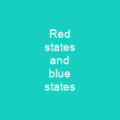Brown: A Color That Speaks Volumes
Imagine a world where colors are not just seen but felt, heard, and even tasted. Brown, the color that often goes unnoticed, is more than meets the eye. It’s a blend of red, yellow, and black in printing; a mix of light from these colors in digital projection; or a combination of red, yellow, and blue in the RYB model. But what makes brown so intriguing? Is it its association with warmth, wildlife, and baking that draws us in?
The History and Evolution of Brown
Where did the term ‘brown’ come from? The word has roots in Old English and has been used as a color name since 1000 AD. It’s fascinating to think about how this simple yet complex color has evolved over centuries, appearing in art since prehistoric times. From ancient Egyptians and Greeks painting with it to the Middle Ages when brown robes were worn by Franciscan monks, brown has always been there, but its significance varied greatly.
Artistic Use of Brown
In the Renaissance, artists began using browns more extensively as oil painting techniques emerged. By the 17th and 18th centuries, brown was the most used color in art, with masters like Caravaggio and Rembrandt using it to create stunning chiaroscuro effects. But why did they choose this color? Wasn’t it just a matter of preference or necessity?
Brown in Nature and Culture
Nature is full of brown: from the rich, fertile soils that support life to the fur of mammals and predatory birds. Even human skin comes in shades of brown due to melanin production. But what about its cultural significance? In western culture, brown has become a symbol of naturalness and health, often associated with simple, inexpensive, and organic products.
From Pigments to Idioms
The pigments used to create brown are as diverse as the color itself. From umber and burnt sienna to mummy brown and van Dyck brown, each has its unique story. But did you know that walnuts have been used since antiquity to make a brown dye? Or that the chestnut tree is another source of natural brown pigments?
Brown in Everyday Life
From military uniforms to sports teams and even UPS, brown has found its place in our daily lives. But why does it remain the least popular color among respondents in Europe and the US? Is it because of its association with lower classes or barbarians in Ancient Rome? Or is there something more subtle at play?
Conclusion
Brown, a color that often goes unnoticed, holds a rich history and diverse applications. From its use in art to its significance in nature and culture, brown speaks volumes about our world. So the next time you see a piece of chocolate or a leaf on the ground, take a moment to appreciate this versatile hue.

You want to know more about Brown?
This page is based on the article Brown published in Wikipedia (retrieved on February 6, 2025) and was automatically summarized using artificial intelligence.






